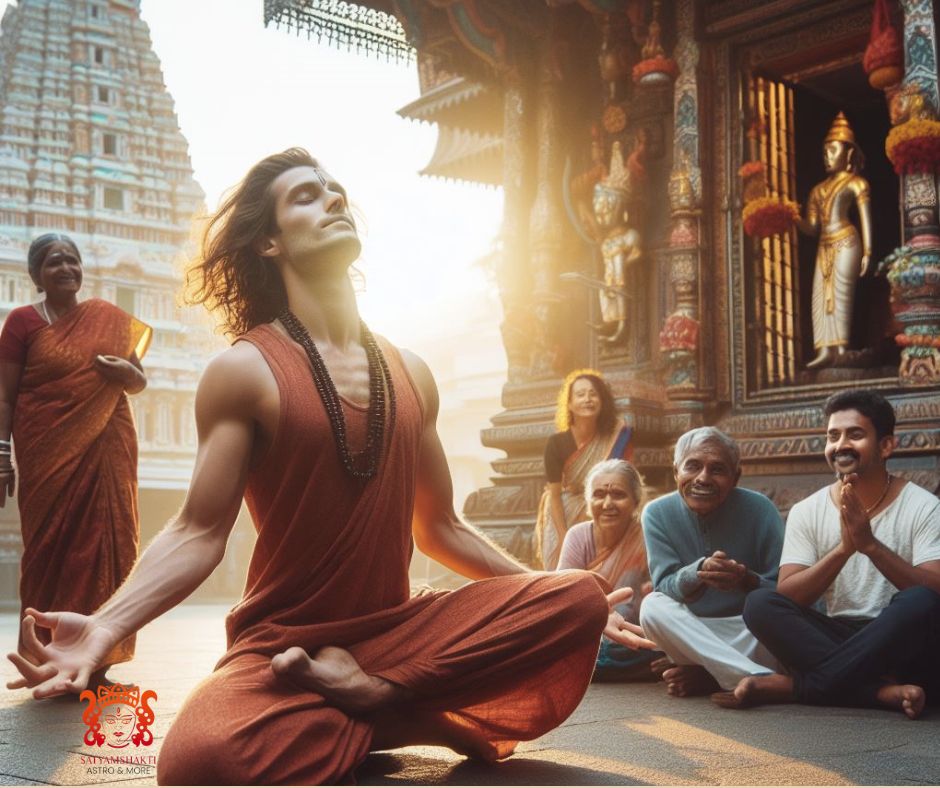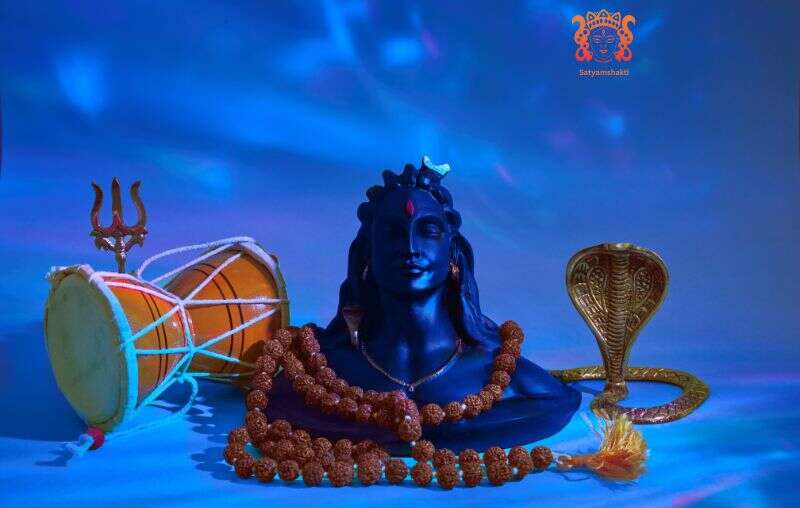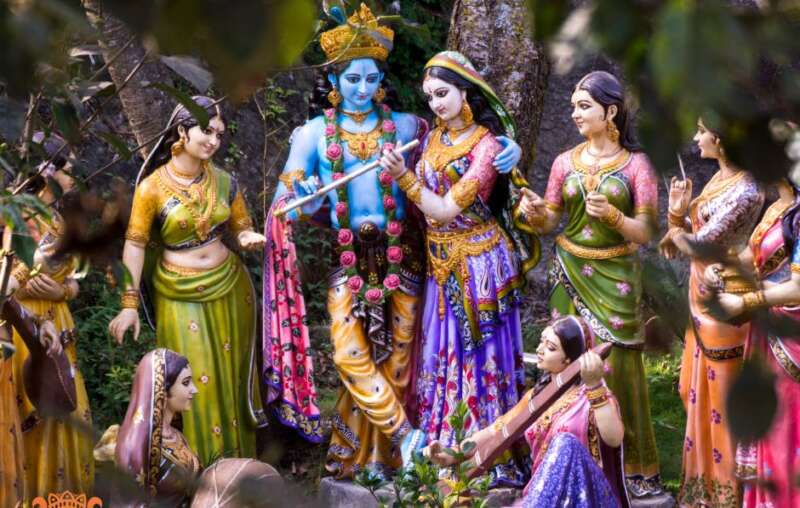In our previous blog, we talked about the concepts of Brahman and Atman, the two co-existing, mutually dependent manifestations of energy that create the tapestry of existence.
In this blog, let’s explore another concept from the Upanishads and the broader Vedanta tradition—Sat-chit-ananda (सच्चिदानन्द).
An understanding of this Sanskrit epithet is crucial to the exploration of the nature of reality, the self (Atman), and the ultimate reality (Brahman).
Sat-Chit-Ananda, an undeniable essence of reality
“Sat Chit Ananda” is a compound term that talks about the subjective experience of the Brahman, the Supreme Reality and its individual manifestation, Atman. The term is made of three words:
• Sat: The first term is the unchanging, most enduring truth of existence, or being, called Sat. It signifies the aspect of reality that is limitless, eternal, going beyond the human construct of time and space.
• Chit: Whether we are aware of it or not, we are made of consciousness or spirit, which is called Chit. In yogic philosophy, chit is the flow of consciousness or awareness, which leads to the knowledge of the Self and existence.
• Ananda: The third term is Ananda, which translates to bliss or happiness. It signifies the aspect of reality that is characterized by boundless joy, happiness, and fulfillment.
When we combine the above three terms, we get Sat-Chit-Ananda, which means Truth-Consciousness-Bliss. The term describes the inextricable unity of existential truth, pure consciousness, and eternal bliss. The ultimate nature of Brahman, the supreme reality in Hinduism, comes forth in this term and becomes an undeniable description of the essence of Atman or Self.
A non-dual concept highlighting a cosmic union
ब्रह्म सत्यं जगन्मिथ्या जीवो ब्रह्मैव नापरः।
अनेन वेद्यं सच्छास्त्रमिति वेदान्तडिण्डिमः॥
This Sanskrit verse from Adi Shankarcharya’s Advaita Vedanta translates to:
“Brahman is the sole reality; the world is merely an expression of Brahman. Ultimately, there is no distinction between Brahman and Atman, the individual self.”
The core of Advaita lies in non-dualism or idealist monism, initially articulated in the Upanishads and later synthesized in the Brahma Sutra within this tradition. Advaita metaphysics believes that Brahman—described as the transcendent—manifests as the world because of its creative energy. This creative energy is maya, which creates the illusion of duality and separation from the divine Brahman.
An undeniable truth is that the world has a dependent existence inside the creative force of Brahman. The self that is experiencing this maya (called jiva) is identical to the transcendent self of the individual (Atman), both being a part of the eternal Brahman. The individual self may appear distinct, but it exists within and as a part of the infinite container of the Brahman.
Duality is experienced because of two factors that keep individuals shackled to the maya: (a) error in judgments (mithya) and (b) ignorance (avidya). When one attains the pure, unbiased knowledge of Brahman, the shackles created by these two factors break over time and one is led to liberation from the cycle of transmigration and ephemeral pleasures.
Advaita Vedanta terms Brahman as Paramarthika Satyam, which means the absolute truth or the only Real. It is the primordial essence that makes up even the smallest particle of the universe. Its energy resides in everything that cannot be seen, although its experience wash over all senses. It is the sense of “Self” of each person, each living being. When one understands and internalizes this absolute truth and allows one’s flow of consciousness to merge with this truth, one can live in a state of eternal bliss.
Realizing Sat-Chit-Ananda by unifying Brahman and Atman
Realizing Sat-Chit-Ananda involves a profound journey into the philosophical and spiritual landscape of Advaita Vedanta, which talks about the unification of Brahman and Atman. This realization signifies the marriage between the ultimate reality and the individual self, which leads to a deep understanding of existence, consciousness, and bliss.
The realization of Sat-Chit-Ananda requires a profound shift in perception. The individual must go beyond the dualistic mindset that creates and perceives the self and the world, the individual and the ultimate reality as separate entities. The world is not separate from Brahman but it is an expression of Brahman’s creative energy. The eternal and unchanging reality of Brahman goes beyond the ephemerality of the material world.
Aham Brahma Asmi (अहम् ब्रह्मास्मि) — I am Brahman
The philosophy of Sat-Chit-Ananda can be embodied by first embracing this phrase from the Brihadaranyaka Upanishad 1.4.10. This is the core philosophy of Advaita Vedanta and it indicates the union of the Atman with the Brahman.
When one realizes the true essence of this phrase, one can start his or her profound journey inward to unify Brahman and Atman. Self-introspection, self-discipline, and self-contemplation hold the key to unlock the philosophy of Sat-Chit-Ananda. The unification involves discarding the limitations of the individual ego, which is illusory. When one sheds the ego, the true nature of the infinite and non-dual self is realized.
Sat or the ultimate truth can be understood by recognizing the shared attribute of eternal existence of both Atman and Brahman. The existence of this truth goes beyond birth, decay, or death. When recognized, one can transcend the transient nature of the material world and soak in the unchanging essence of all that exists.
Chit, or consciousness, is inherent in both Atman and Brahman. Its manifestation is not limited to individual awareness. It is the universal and infinite consciousness that underlies all of existence. Realizing this universal consciousness leads to a profound shift in perception to attain bliss (Ananda).
It is important to note that Ananda is inherently present in both Atman and Brahman. The existence of this state of consciousness is not contingent upon external factors. When one attains bliss, one realizes that it is the natural state of existence. Both Brahman and Atman co-exist in a state of bliss, unaffected by cosmic and worldly storms that ravage through from time to time.
The realization of Sat-Chit-Ananda brings about a sense of fulfillment, joy, and contentment that transcends ordinary human experiences. It is a transformative journey of self-discovery, calling upon one to transcend the illusions of duality, remove ignorance, and directly experience the eternal, conscious, and blissful nature of Atman and the Brahman. To live by the philosophy of Sat-Chit-Ananda is a spiritual quest for liberation, the destination is nothing but self-realization.



